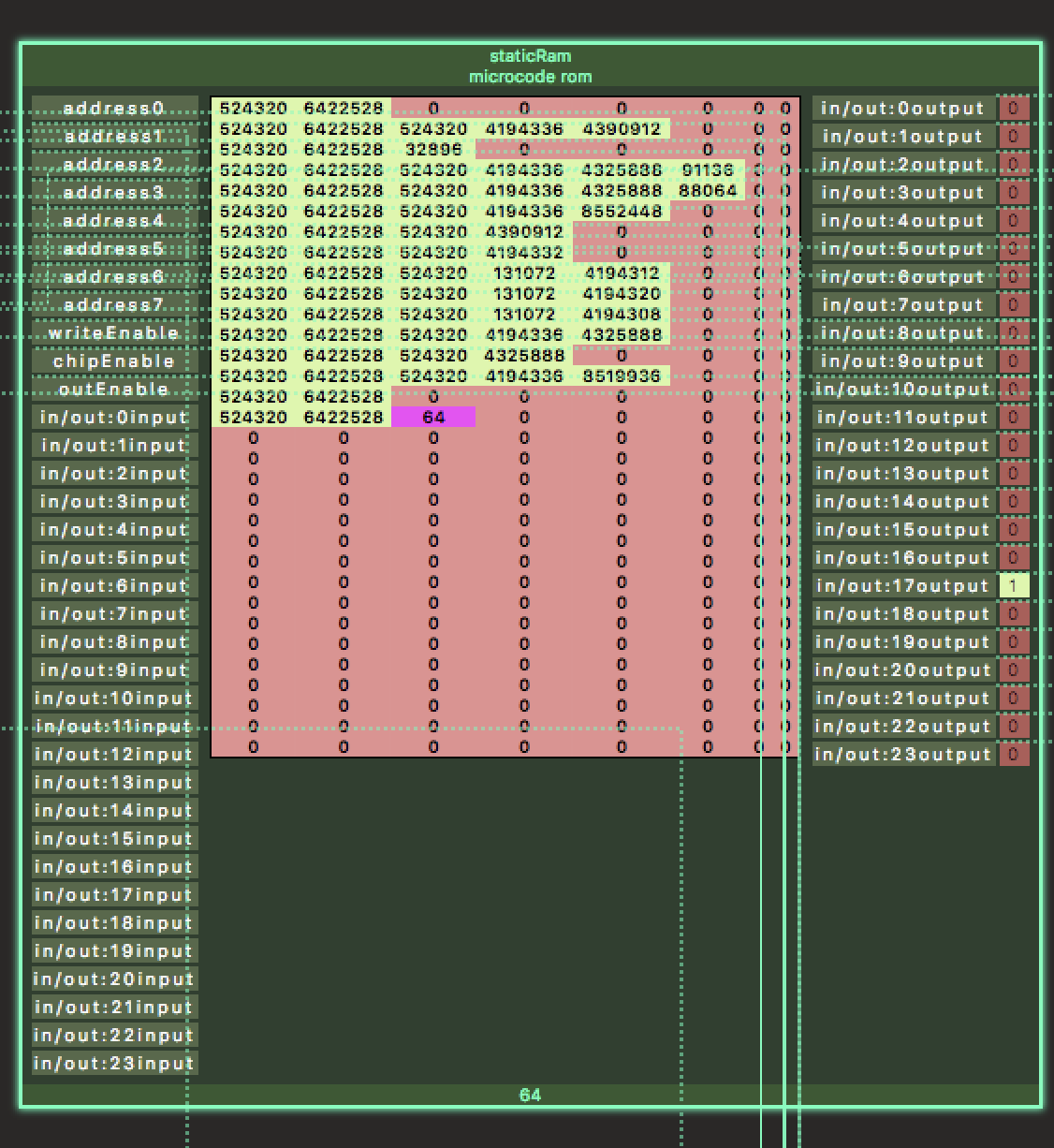Bloggo
A GitHub pages blog
16bits and bootloaders.
16 bit upgrade.
At the end of the last post I was describing what would need to be done to support a larger address space so we could store and access more than 256 location in memory.
I considered adding a second memory address register, one for the high byte of the address and one for the low byte. But as I started to propagate the consequences of that change, I found I would need to change all the existing microcode for every instruction if I wanted them to take advantage of the larger address range - and then I might have some instructions with limnited address support. Instead I decided to simply change all registers to 16 bits - because everthing is defined in the simulator using the hardware description langauge javascript apis - and then eventually translated to verilog - this change wasn’t so painful.
Heres the diff: https://github.com/mjkkirschner/8chipsimulator/compare/debugParts…16bitAddressing
mostly it looks something like this:
- let adder = new nbitAdder(8, "adder");
+ let adder = new nbitAdder(16, "adder");
The most difficult part of this change was actually to support drawing the larger memory space in
the simulator view.

I ended up using react-virtualized - which worked great to limit the displayed memory cells. We went from needing to draw a SRAM of 256(bytes) cells to one of 65,536 (2bytes each).
I also added an api for writing hex values to RAM since 16 bit arrays were getting hard to look at.
An example looks like this:
ram.writeData(0, hex2BinArray("0x0010").map(x => Boolean(x))); //Load SPI control reg.
ram.writeData(1, hex2BinArray("0x0001").map(x => Boolean(x))); //put a 1 in LSB... this starts coms.
ram.writeData(2, hex2BinArray("0x0010").map(x => Boolean(x))); //Load SPI control reg.
ram.writeData(3, hex2BinArray("0x0000").map(x => Boolean(x))); //reset coms control.
This reminds me I should really start on an assembler soon programs can be written
in mnemonics, like LOADSPICON - instead of hex2BinArray("0x0010") in the example above.
The assembler should also support symbols and labels so memory locations can be referred to by names.
But thats for another post.
….